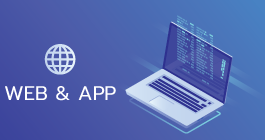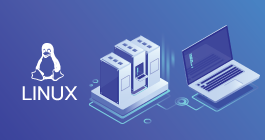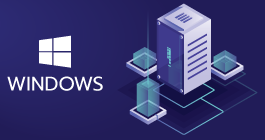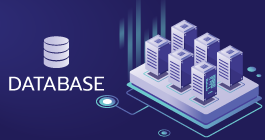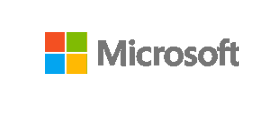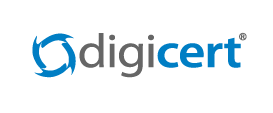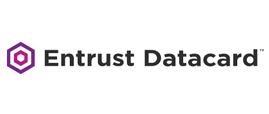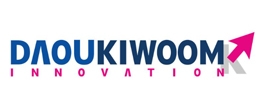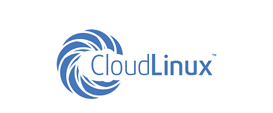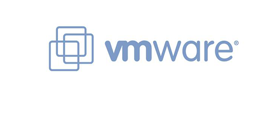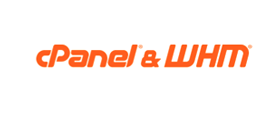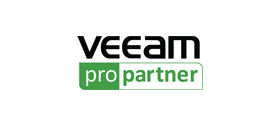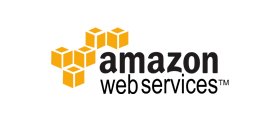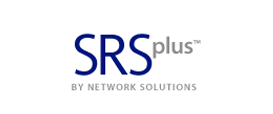-
Welcome to My Website
This is a text box. Write your own content here. This is an excellent place for you to add a paragraph.
Netway Support Center
เราพร้อมบริการคุณ ตลอด 24 ชั่วโมง
Payment & Invoices
Products Knowledge










Zendesk




Other Cloud Products
Technical Knowledge
Website/Install Application & FTP
Linux Technical Knowledge
Windows Technical Knowledge
Database
Blog list (8)
The new world of work, secured by Google
The new world of work, secured by Google. Keep your business safer with a zero trust security model for modern collaboration – our new security guide explains how.Download The way we work has dramatically changed. We’re generating more sensitive data than ever before – and storing it in the cloud for easy access anywhere in the world. By sharing it with both internal and external collaborators, who then share it further, we are driving viral collaboration.Although this new way of working has many benefits, it also creates security challenges that legacy collaboration tools aren’t equipped to handle.In our new guide “How Google Workspace helps protect your organization,” find out how Google Workspace was built for the cloud with a zero trust approach to protect your information from phishing, malware, ransomware, and supply chain attacks.
ส่องวิธีสร้างธุรกิจ Startup แบบไม่ต้องใช้ทุนเยอะ สำหรับผู้ประกอบการใหม่
ส่องวิธีสร้างธุรกิจ Startup แบบไม่ต้องใช้ทุนเยอะ สำหรับผู้ประกอบการใหม่ เราเห็นสตาร์ทอัพหลายเจ้าที่มีเงินทุนจำนวนมหาศาลจากการระดมทุน และเชื่อว่าการเริ่มสร้างสตาร์ทอัพต้องโฟกัสไปที่การระดมเงินทุนเท่านั้น ความคิดนี้อาจเป็นความคิดที่ผิด จริง ๆ แล้วการเริ่มสร้างสตาร์ทอัพจะต้องผ่านขั้นการทดสอบไอเดียโดยปราศจากการลงทุนจากภายนอก และยิ่งถ้าคุณมีเงินออมส่วนตัวไม่เพียงพอ คุณจะต้องมองหาวิธีสร้างสตาร์ทอัพโดยไม่เสียค่าใช้จ่ายใด ๆ เลย ซึ่งสามารถทำได้ตามขั้นตอนดังต่อไปนี้ทดสอบลองขายไอเดียลองสร้างหน้าเว็บไซต์ (Landing Page) พร้อมเปิดจองผลิตภัณฑ์ pre-sales เพราะการสร้างหน้าเว็บในปัจจุบันไม่จําเป็นต้องมีความรู้ทางเทคนิคก็สามารถสร้างได้ง่าย ๆ ในราคาประหยัด โดยใช้องค์ประกอบการออกแบบ (Design assets) เว็บไซต์ทั่วไปที่ราคาไม่สูงคุณอาจกังวลหากเปิดขายสินค้าทั้ง ๆ ที่ยังไม่ผลิต แต่วิธีนี้กำลังจะเป็นมาตรฐานของอุตสาหกรรม และยังเป็นวิธีที่เซฟที่สุดในการทดสอบว่าไอเดียสตาร์ทอัพของคุณสามารถดึงดูดผู้บริโภคได้จริงหรือไม่ จะมีรายได้เท่าไหร่ หากรายได้ไม่เป็นไปตามที่คาดไว้ ก็แค่ใช้องค์ประกอบเว็บไซต์เดิมมาทดลองซ้ำอีกครั้งเพื่อดูว่าผลลัพธ์ดีขึ้นหรือไม่คุณอาจเสนอไอเดียกับนักลงทุนเพื่อให้เขาช่วยลงทุนเงินให้ ซึ่งอันที่จริงแล้วนักลงทุนไม่ได้สนใจธุรกิจหรือผลิตภัณฑ์ของคุณในเชิงเทคนิค แต่สนใจว่าไอเดียของคุณจะสามารถสร้างเงินให้เขาได้มากแค่ไหนสร้างผลิตภัณฑ์ตั้งต้นด้วย No Codeถึงแม้ว่าคุณจะไม่มีความรู้ทางเทคนิคด้านการสร้างเว็บไซต์หรือ application แต่มีบริการแพลตฟอร์ม No-code อยู่จำนวนมากที่จะช่วยให้คุณสร้างผลิตภัณฑ์ MVP ได้MVP (Minimum Viable Product) คือ การสร้างผลิตภัณฑ์ตั้งต้น หรือผลิตภัณฑ์ที่ยังไม่สมบูรณ์ เพื่อนำไปทดลองกับตลาดแล้วดูว่าผลตอบรับเป็นอย่างไร ควรปรับตรงไหน MVP จะเป็นกลยุทธ์ที่ช่วยลดความเสี่ยงที่ดีหากผลิตภัณฑ์ไม่เป็นที่ต้องการของตลาดทั้งนี้ หาก Traction (ยอดผู้เยี่ยมชมเว็บไซต์) สูงอาจนำผลกำไรที่ได้ไปลงทุนจ้างผู้เชี่ยวชาญตัวจริงมาช่วยเขียนเว็บไซต์ หรือไปเพิ่มเงินทุนจาก Seed investor (บุคคลที่ให้เงินทุนในระยะเริ่มแรกของการทำสตาร์ทอัพ) มองหาทีมซัพพอร์ตการมีคนคอยช่วยเหลือย่อมได้เปรียบกว่าทำเองคนเดียว โดยทีมซัพพอร์ตอาจจะมาในรูปแบบ Co-Founder แบรนด์คู่ค้า หรือคนใกล้ตัวก็ได้การมี Co-Founder ที่มีไอเดียหรือแพชชั่นตรงกันย่อมส่งผลดีต่อการสร้างสตาร์ทอัพเพราะไม่ต้องไปเสียค่าใช้จ่ายในรูปแบบของเงินเดือน อีกทั้งยังได้ทักษะ ประสบการณ์ และแรงงานจากทีม โดยเฉพาะทักษะการเขียนเว็บไซต์หรือโปรแกรม ซึ่งจะเป็นประโยชน์ในการสร้าง Landing Pageหรือบางทีอาจจะไม่ต้องไปหาจากไหนไกล ลองขยับเข้ามามองคนใกล้ตัวที่พร้อมจะสนับสนุนคุณดูสิ อย่างเช่นคนในครอบครัวหรือเพื่อนที่พร้อมจะช่วยเรื่องเงินลงทุนให้คุณได้ทำตามความฝัน แต่ก็ต้องระวังไว้อย่างนึงว่า หากคุณนำเงินทุนไปใช้ผิดที่ผิดทาง อาจเสียความสัมพันธ์กับญาติมิตรโดยไม่รู้ตัวได้จับมือกับ Partnerการจับมือกับแบรนด์คู่ค้าก็เป็นอีกหนึ่งทางเลือกที่เซฟที่สุดในการขยายธุรกิจ คุณต้องมองหาแบรนด์ที่มีบริษัทเป็นของตัวเอง และไม่ใช่คู่แข่งโดยตรงกับธุรกิจของคุณ ซึ่งอาจจะมีกลุ่มลูกค้าเดียวกันแต่มีวิธีที่ต่างกันออกไป และแน่นอนว่าการตลาดแบบร่วมมือกันจะช่วยสร้างความจดจำในตัวแบรนด์และเรียกลูกค้าได้เป็นอย่างมากการมีหุ้นส่วนช่วยทำให้การระดมทรัพยากรจากผู้ที่มีเงินทุนเป็นเรื่องง่าย สิ่งสำคัญในการทำหุ้นส่วนให้ประสบความสำเร็จคือ ทุกคนต้องรู้บทบาทของตัวเองตามสัญญาจัดตั้งหุ้นส่วน (Partnership deed)สร้างตัวตนผ่าน Social mediaไม่ว่าจะเป็นธุรกิจขนาดใหญ่หรือธุรกิจประกอบการคนเดียว พลังของ Social media ก็สามารถพลิกกระดานเกมธุรกิจคุณได้ การทำการตลาดบน Social media เป็นวิธีที่ใช้เงินน้อยที่สุดแต่สร้างการเปลี่ยนแปลงได้มากที่สุด ดังนั้น หากคุณใช้อย่างถูกวิธี คุณจะสามารถขยายแบรนด์ให้เป็นที่รู้จักได้แบบทวีคูณ เนื่องจาก Social media สามารถแนะนําธุรกิจคุณให้กับผู้ใช้งานอินเทอร์เน็ตที่มีประวัติความสนใจในด้านนั้น ๆโปรโมทสินค้าแบบ Pay Per Conversionการทำ Marketing (การโปรโมทเพื่อให้ธุรกิจเป็นที่รู้จัก) เป็นหนึ่งในขั้นตอนที่ใช้เงินมากที่สุดของการเริ่มทำสตาร์ทอัพคุณอาจหมดเงินจํานวนมากกับไปการโปรโมตสินค้าทดลองแต่กลับได้ผลกำไรต่ำ โดยเฉพาะอย่างยิ่ง หากไม่เจอตลาดผลิตภัณฑ์ที่เหมาะสมกับธุรกิจของตัวเองวิธีคือให้โฟกัสไปที่กิจกรรมทางการตลาดที่ทําด้วยตัวเองได้โดยไม่ต้องเสียค่าใช้จ่าย ยกตัวอย่างเช่น Content marketing หรือหาคู่ค้าที่เต็มใจขายผลิตภัณฑ์ของคุณให้แบบ Pay-per-conversion ซึ่งวิธีนี้อาจลำบากกว่าการจ้างคนมาโฆษณาให้เลย แต่มันจะเป็นทางเลือกเดียวที่คุณไม่ต้องเสียเงินไปกับขั้นตอนโปรโมทสร้างประสบการณ์ที่ดีแก่ลูกค้า ไม่มีลูกค้าก็ไม่มีรายได้ ลูกค้าหรือผู้บริโภคจึงเป็นปัจจัยสำคัญในการธุรกิจ หากคุณเป็นสตาร์ทอัพหรือธุรกิจน้องใหม่ สิ่งที่ต้องทำเลยคือ ทรีตลูกค้าทุกคนอย่างเท่าเทียมกันให้รู้สึกพิเศษ เพื่อให้มั่นใจว่าพวกเขาจะกลับซื้อสินค้าหรือใช้บริการเราอีกครั้ง เช่น มอบของขวัญเล็ก ๆ น้อย ๆ หรือให้คูปองส่วนลดสำหรับลูกค้าประจำจับตาดูคู่แข่งอีกหนึ่งข้อที่สำคัญไม่แพ้กันเลยคือ คู่แข่งทางธุรกิจ คุณควรให้ความสำคัญกับสิ่งที่คู่แข่ง ‘ทำอยู่’ มากพอ ๆ กับสิ่งที่คุณ ‘กำลังจะทำ’การจับตาดูคู่แข่งช่วยให้คุณเรียนรู้จากฝั่งตรงข้ามในหลาย ๆ ด้าน เช่น ตอนนี้กำลังแข่งอยู่กับใคร เขามีข้อเสนออะไรบ้างที่คุณยังไม่มี รวมถึงการกำหนดราคาแข่งขัน และสร้างแคมเปญการตลาดต่าง ๆ Cr. https://techsauce.co/tech-and-biz/startup-no-money
Learn how to capitalize on The Defender’s Advantage
Learn how to capitalize on The Defender’s Advantage Understand and activate the six critical functions of cyber defense.DOWNLOAD Organizations around the world are facing increasingly sophisticated cyberattacks – and many security teams aren’t equipped to defend these attacks due to lack of resources, expertise and misconfigured tools.The Defender's Advantage is the concept that organizations are defending against attacks in their own environment. With coordinated cyber defense efforts guided by intelligence, organizations can understand their risks and improve their capabilities to reduce the impact of attacks.Read The Defender’s Advantage, an award-winning book by Mandiant, to learn how to activate the six critical functions of cyber defense, and turn the tables on cyberattackers.DOWNLOAD
July 2023 - Netway Combo ข่าวสารรายเดือน ก.ค. 2023
Netway Combo - Jul 2023 เดือนนี้เราเน้น Cybersecurity ค่ะ ✅แอปช้อปปิ้งออนไลน์อาจเก็บข้อมูลของเราเกินกว่าที่เราคิด https://shorturl.at/ioDIW ✅9 วิธีป้องกันความปลอดภัยให้ Home Network https://shorturl.at/chlVX ✅10 ข้อที่ SME ควรเตรียมทำเผื่อเกิดปัญหาที่ไม่คาดคิด https://shorturl.at/hikE9 ✅Business Email Compromise (BEC) ⁓ การโจมตีผ่านอีเมลเพื่อหลอกเอาเงินจากองค์กร ส่วนใหญ่หลอกว่ามาจาก CEO https://shorturl.at/jkmoX ✅Microsoft Copilot ใน Microsoft 365https://bit.ly/472tYKz
Business Email Compromise Jumped 81! Last Year Learn How to Fight It
Business Email Compromise Jumped 81! Last Year Learn How to Fight It In recent years, electronic mail (email for short) has become an essential part of our daily lives. Many people use it for various purposes, including business transactions. With the increasing dependence on digital technology, cybercrime has grown. A significant cyber threat facing businesses today is Business Email Compromise (BEC).Why is it important to pay particular attention to BEC attacks? Because they’ve been on the rise. BEC attacks jumped 81% in 2022, and as many as 98% of employees fail to report the threat.What is Business Email Compromise (BEC)?Business Email Compromise (BEC) is a type of scam in which criminals use email fraud to target victims. These victims include both businesses and individuals. They especially target those who perform wire transfer payments. The scammer pretends to be a high-level executive or business partner. Scammers send emails to employees, customers, or vendors. These emails request them to make payments or transfer funds in some form.According to the FBI, BEC scams cost businesses around $1.8 billion in 2020. That figure increased to $2.4 billion in 2021. These scams can cause severe financial damage to businesses and individuals. They can also harm their reputations.How Does BEC Work?BEC attacks are usually well-crafted and sophisticated, making it difficult to identify them. The attacker first researches the target organization and its employees. They gain knowledge about the company’s operations, suppliers, customers, and business partners. Much of this information is freely available online. Scammers can find it on sites like LinkedIn, Facebook, and organizations’ websites. Once the attacker has enough information, they can craft a convincing email. It's designed to appear to come from a high-level executive or a business partner.The email will request the recipient to make a payment or transfer funds. It usually emphasizes the request being for an urgent and confidential matter. For example, a new business opportunity, a vendor payment, or a foreign tax payment.The email will often contain a sense of urgency, compelling the recipient to act quickly. The attacker may also use social engineering tactics. Such as posing as a trusted contact or creating a fake website that mimics the company's site. These tactics make the email seem more legitimate.If the recipient falls for the scam and makes the payment, the attacker will make off with the funds. In their wake, they leave the victim with financial losses. How to Fight Business Email CompromiseBEC scams can be challenging to prevent. But there are measures businesses and individuals can take to cut the risk of falling victim to them.Educate Employees Organizations should educate their employees about the risks of BEC. This includes providing training on how to identify and avoid these scams. Employees should be aware of the tactics used by scammers. For example, urgent requests, social engineering, and fake websites.Training should also include email account security, including: • Checking their sent folder regularly for any strange messages • Using a strong email password with at least 12 characters • Changing their email password regularly • Storing their email password in a secure manner • Notifying an IT contact if they suspect a phishing email Enable Email Authentication Organizations should implement email authentication protocols. This includes: • Domain-based Message Authentication, Reporting, and Conformance (DMARC) • Sender Policy Framework (SPF) • DomainKeys Identified Mail (DKIM) These protocols help verify the authenticity of the sender's email address. They also reduce the risk of email spoofing. Another benefit is to keep your emails from ending up in junk mail folders.Deploy a Payment Verification Process Organizations should deploy payment verification processes, such as two-factor authentication. Another protocol is confirmation from multiple parties. This ensures that all wire transfer requests are legitimate. It’s always better to have more than one person verify a financial payment request. Check Financial Transactions Organizations should deploy payment verification processes, such as two-factor authentication. Another protocol is confirmation from multiple parties. This ensures that all wire transfer requests are legitimate. It’s always better to have more than one person verify a financial payment request. Establish a Response Plan Organizations should establish a response plan for BEC incidents. This includes procedures for reporting the incident. As well as freezing the transfer and notifying law enforcement. Use Anti-phishing Software 11 Businesses and individuals can use anti-phishing software to detect and block fraudulent emails. As AI and machine learning gain widespread use, these tools become more effective. The use of AI in phishing technology continues to increase. Businesses must be vigilant and take steps to protect themselves.Need Help with Email Security Solutions?It only takes a moment for money to leave your account and be unrecoverable. Don’t leave your business emails unprotected. Give us a call today to discuss our email security solutions.Article used with permission from The Technology Press.
-
Domain
-
Hosting
-
Cloud & Managed
-
SSL
-
Email
- เรียนรู้เพิ่มเติม
- Microsoft 365 รุ่นต่างๆ
- Microsoft 365 สำหรับธุรกิจ
- Microsoft 365 สำหรับใช้งานที่บ้าน
- ทดลองฟรี
- G Suite
- เทคนิคลดต้นทุนอีเมล Microsoft 365 มากกว่า 28%
- เทคนิคลดต้นทุนอีเมล G Suite มากกว่า 19%
- Zimbra-Based Email
- Traditional Email by cPanel
- Physical to Cloud Migration
- Exchange Server to Microsoft 365 Migration
- G Suite to Microsoft 365 Migration
- Microsoft 365 to G Suite Migration
- Cloud to Cloud Migration
-
Microsoft
-
Google
-
Marketing
-
Others
-
Blog
-
Microsoft Teams
-
microsoft-365-business-premium
-
test-slide
-
Order
-
Promo












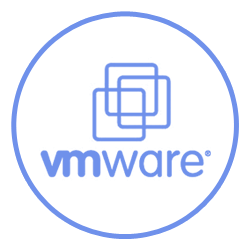









.png)



.png)
